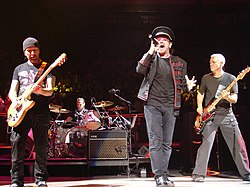September 21, 2011
“Social Production” as a Market Strategy

Given that definition, can social production build stronger market economies? Will we create compelling financial incentives and rewards with more social cooperation?
“Social production” was cognitively described by Yochai Benkler in the Wealth of Networks. We often think of market and social production as mutually exclusive. We mentally pit financial outcomes against egalitarian “free” outcomes. A good example is the open source versus traditional software licensing debates currently playing out in the Gov 2.0 movement in Washington D.C.
Advocates of open source development equate traditional software development as slow, expensive and non-inclusive, while traditional software developers often give short shrift to the transformative quality of federated software development.
Traditional software developers argue for rules, barriers, and structure often under the realm of “security” and “privacy” while open source developers often drive to undefined outcomes in the hope of achieving sustainable change. Obviously, there are no ultimate “rights” and “wrongs’. Properly applied, each can enable the other to work better. Social production can enable better market outcomes—with tangible financial incentives and rewards.
U2’s social production model drives business results.
Recently my wife Amy and I attended one of U2’s concerts in Tampa, Florida on the 360 Tour (Great concert! See it if you can!). As we approached the concert, we had a keen sense that something unusual was happening. Everything about the concert is BIG. Big stadium venues, the biggest concert stage ever built (The Claw), and maybe most importantly, the level of audience involvement—online and offline. Tens of thousands of people of all ages are paying many millions of dollars (240M through the NJ venue), to see a performance of what are largely time worn songs. Why?
The answer was apparent the next day as a You Tube search revealed the hundreds of concert videos captured from almost every perspective of Raymond James stadium. Videos from virtually all other concert venues—London, Barcelona, New York and others are also in widespread Web circulation.
U2 is breaking ground. It is using social production of the many to drive a market outcome that may well make the 360 Tour the most financially successful of all time. Social production achieved by enabling participation drives hundreds of thousands of concert-goers to pay for the experience.
But haven’t we always leveraged social production in market?
Kim Kobza